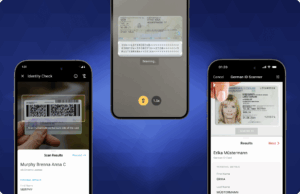What are employee apps?
Employee apps are mobile applications explicitly created for the workforce of a certain company. They are used for various office tasks, including scheduling shifts, making appointments, managing paperwork, and internal communication. These internal apps are designed to connect employees and give them real-time access to job-relevant information on both personal and company devices.
How can enterprises benefit from employee apps?
Apps for employees can do much more than just improve administrative efficiency. Let’s look at a few use cases for an employee app and explore the resulting benefits for enterprises and their staff:
Streamlined internal communications
Employee apps can serve as a company’s communications hub, both for real-time information exchange and as a document transmission platform.
An instant messaging feature shortens the response time for urgent issues. It’s also the perfect channel for coordination and quick questions. Not only does this increase communication speed, it also reduces misunderstandings. This is a vital capability for field workers and remote staff, as it enables teams to communicate regardless of time zone or geographical location.
An employee app can also be a space for communicating job-relevant information. Whether it’s meeting times, shift schedules, or menu planning – the app gives the employees concerned easy access to the data and documents they need. Conversely, relevant information can be sent directly to particular teams, departments, or individuals. This speeds up data processing in many common workflows.
Internal knowledge base
Employee apps can be a channel for the company’s internal knowledge base, delivering essential information for new hires and beneficial tools for all employees.
By incorporating features such as searchable databases, document repositories, and interactive training materials, employee apps provide easy access to critical resources and company-specific knowledge. This lets employees quickly find answers, access training materials, and stay informed about company policies and procedures, fostering a culture of continuous learning and growth.
Document digitization & management
Employees can use their smartphone app to digitize data or scan paper documents. Not only does this speed up document management processes, it also eliminates the need for expensive, maintenance-intensive hardware, significantly reducing costs.
Choosing between building or buying an employee app
When deciding between internal development and software procurement, a team needs to assess its operation’s individual needs and resources first. Both choices have benefits and drawbacks.
Creating an internal employee app makes sense for big businesses, especially if they can draw on their own software developers for the project – and for its maintenance. This allows for extensive customization and greater flexibility. Not all features have to be created from scratch.
Internal development allows companies to incorporate components from other sources, resulting in a “Brew” approach that balances “Make” and “Buy”.
On the other hand, for smaller companies or those with limited IT resources, popular platforms like Staffbase offer significant advantages. By opting for a ready-made employee app platform, they can leverage the provider’s expertise and infrastructure, saving time and resources they would otherwise have to commit to development and ongoing maintenance.
Exploring the potential of scanning features inside an employee app
The market offers countless software development kits (SDKs) that provide different types of useful functionalities developers can easily add to a mobile app or website. Scanner SDKs, for example, enable employee apps to digitize and process paper documents and scan barcodes efficiently.
Data extraction for complex documents
A Document Scanner SDK gives apps the ability to extract relevant data from documents like medical certificates, driver’s licenses, and others. The seamless transmission of this data to the backend allows for effective document management and processing.
The high input quality also enables automated processing, which has applications across industries – from fleet management over insurance claims to common HR workflows.
For instance, Deutsche Telekom faced challenges in submitting medical certificates for sick leave and cash receipts, which required physical mailing and caused delays and frustration. To simplify the workflow, they integrated the Scanbot SDK into their internal MitarbeiterApp, enabling employees to digitize documents easily. The SDK ensures high-quality scanning and data extraction. This allows for instant digital transmission of documents, speeding up processing and ensuring timely reimbursement of expenses.
Creating a digital knowledge base
Trade journals, books, and flyers are just a few examples of educational material in print form. However, keeping track of the available texts in a company and exchanging them internally is difficult – which can hinder learning.
An employee app can help. By integrating a modern Document Scanner SDK, content can be quickly digitized and stored in the company’s digital knowledge base, sorted by topic or area. Every employee can then search for and access relevant content within the app.
Conclusion
Employee apps are indispensable tools that improve information sharing, streamline administrative processes, and foster efficient organizational communication.
The ability to scan documents, barcodes, or QR codes directly from the app empowers employees to effortlessly capture and share crucial information on the go. This not only eliminates error-prone manual data entry but also enhances collaboration by providing instant access to relevant documents and resources.
Moreover, convenient and accurate scanning enables organizations to digitize and automate administrative tasks like expense reporting, inventory management, and employee onboarding, saving valuable time and resources.







